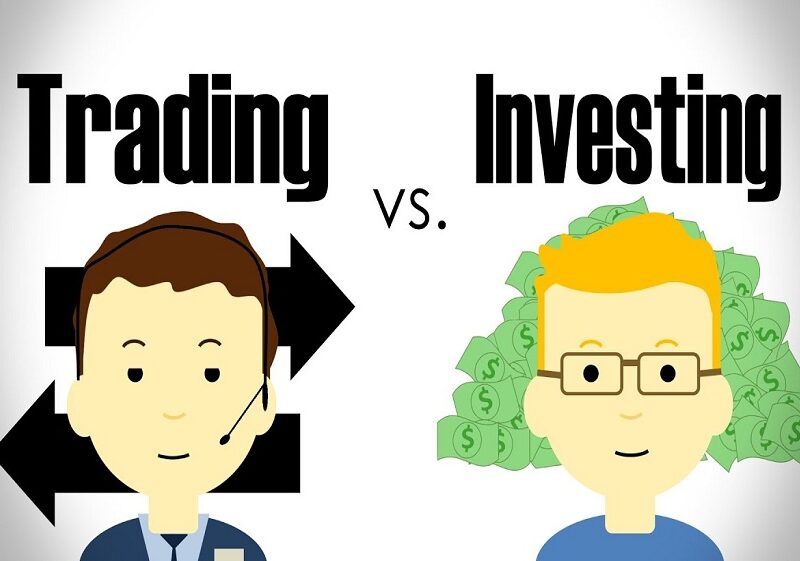In finance, trading and investing are two distinct approaches to navigating the markets. The two strategies involve money in assets to generate profits, but their objectives, time horizon, and risk management differ significantly. However, to make an informed financial decision, it is important to understand investing and trading concepts such as mutual funds, equity trading, the difference between futures and options, etc. In this article, we will do an in-depth analysis and examine investing Vs trading in detail.
Time Horizon
Trading and investing differ primarily in terms of their time horizons. In investing, assets are typically held for an extended period of time, often several years or more. An investor seeks to profit from the growth potential of their assets. Assets can be stocks, bonds, real estate, or mutual funds. Over time, investing aims to build wealth gradually, leveraging the power of compounding and capital appreciation.
In contrast, trading has a shorter time horizon, ranging from days to weeks or months. To profit from short-term price movement, traders actively buy and sell assets. For identifying optimal entry and exit points, traders use technical analysis, chart patterns, and market trends. Also, risks are often amplified when traders use leverage to magnify potential returns.
Risk
Investing and trading have significantly different risks. With a longer time horizon, investing tends to be more conservative and less susceptible to short-term market fluctuation. It is common for investors to seek steady, long-term growth and to accept some degree of market volatility.
However, trading carries a higher level of risk since its time frame is shorter and price movements are more rapid. Thus, risk management and discipline are crucial to successful trading.
Research And Analysis
Research and analysis are necessary for investing and trading, but their depth and focus vary. Fundamental analysis is done in investing to assess a company’s financial health, earnings potential, and overall market environment. The objective of investors is to identify undervalued assets that are likely to grow in value.
Traders use technical analysis to predict short-term price movements by studying price charts, patterns, and market indicators. Moreover, it is common for technical signals and market sentiment to influence trading decisions. Additionally, you can explore derivatives trading by researching on what is options trading and futures trading.
Transaction Cost
Investing and trading are both affected by transaction costs. Investors trade less frequently and hold assets for longer periods. Thus, they tend to have lower transaction costs. However, fees may be higher for some investments, such as mutual funds.
The frequency of trades by traders, especially those engaged in day trading, may lead to higher transaction costs. Additionally, frequent trading can result in higher taxes since short-term capital gains are typically taxed at a higher rate than long-term gains.
Portfolio Diversification
The strategy of diversifying a portfolio is common in both investing and trading. But, the approaches are different. As part of diversification, investments are spread across different asset classes and industries to reduce risk. Also, it is important for investors to create a portfolio that can stand up to market fluctuations.
The purpose of diversification for traders is often to spread risk among a variety of short-term trades. When trading multiple positions simultaneously, diversification can help mitigate the impact of losses in any single position. You can get a seamless trading experience with a stock market app like Kotak Securities Trading app.
Complementary Strategies
Even though investing and trading are distinct approaches, they can be complementary in a well-rounded financial plan. There are certain trading tactics that can enhance the performance of a long-term investor’s portfolio. To hedge against market downturns, investors may use tactical asset allocation or options strategies.
In contrast, active traders can incorporate longer-term investment holdings into their overall portfolios to balance risks and take advantage of growth opportunities. By using this hybrid approach, traders can profit from short-term price movements as well as long-term capital appreciation.
Emotional Discipline
In both investing and trading, emotional discipline is crucial. Nevertheless, each approach has its own emotional challenges. In order to succeed in investing, investors must remain patient and avoid acting on short-term fluctuations in the market. Long-term investors tend to weather market downturns by placing their trust in the potential growth of their investments.
When prices fluctuate rapidly, traders are faced with the challenge of managing their emotions. As trading is short-term, it can cause increased stress and an inclination to make impulsive decisions. However, the secret to successful trading lies in adhering to predefined strategies and avoiding emotional trading.
Conclusion
Investments and trading are two different yet interconnected strategies in finance. The choice between the two approaches depends on each individual’s financial goals, risk tolerance, and time horizon. Trading appeals to individuals who want short-term profits through active buying and selling, while investing appeals to those seeking long-term growth. For both approaches, Kotak Securities offers innovative solutions and personalized support. Make the right choice and achieve your financial goals with Kotak Securities.

